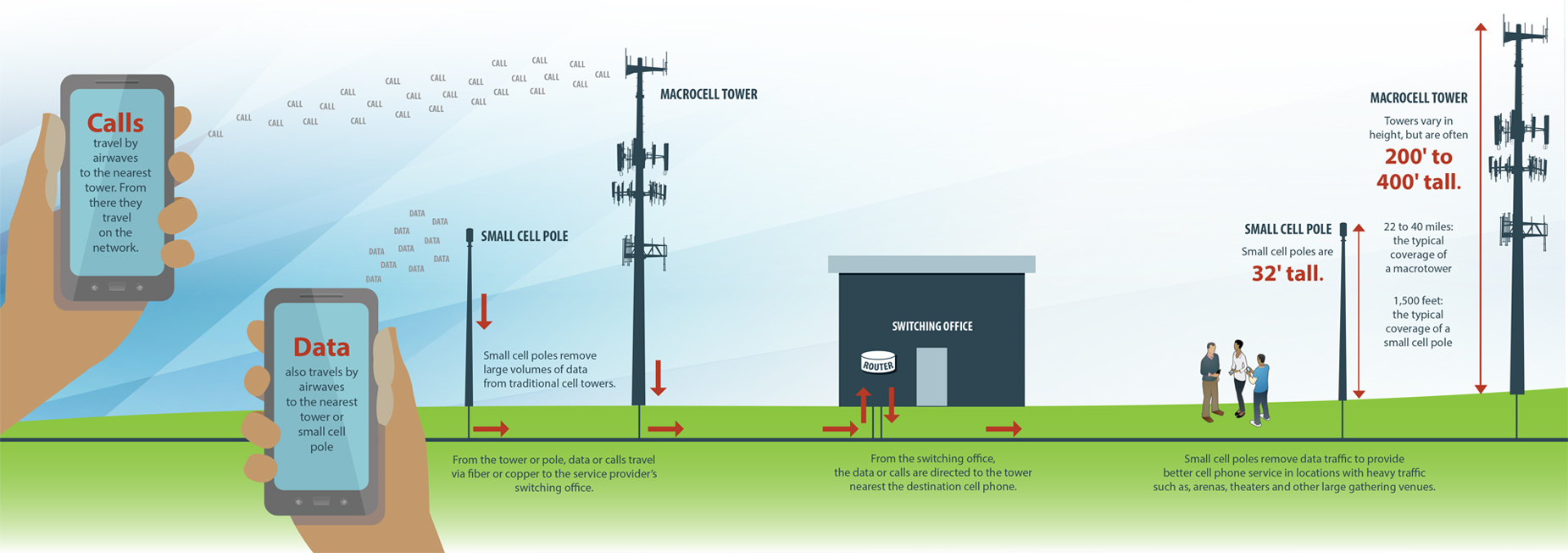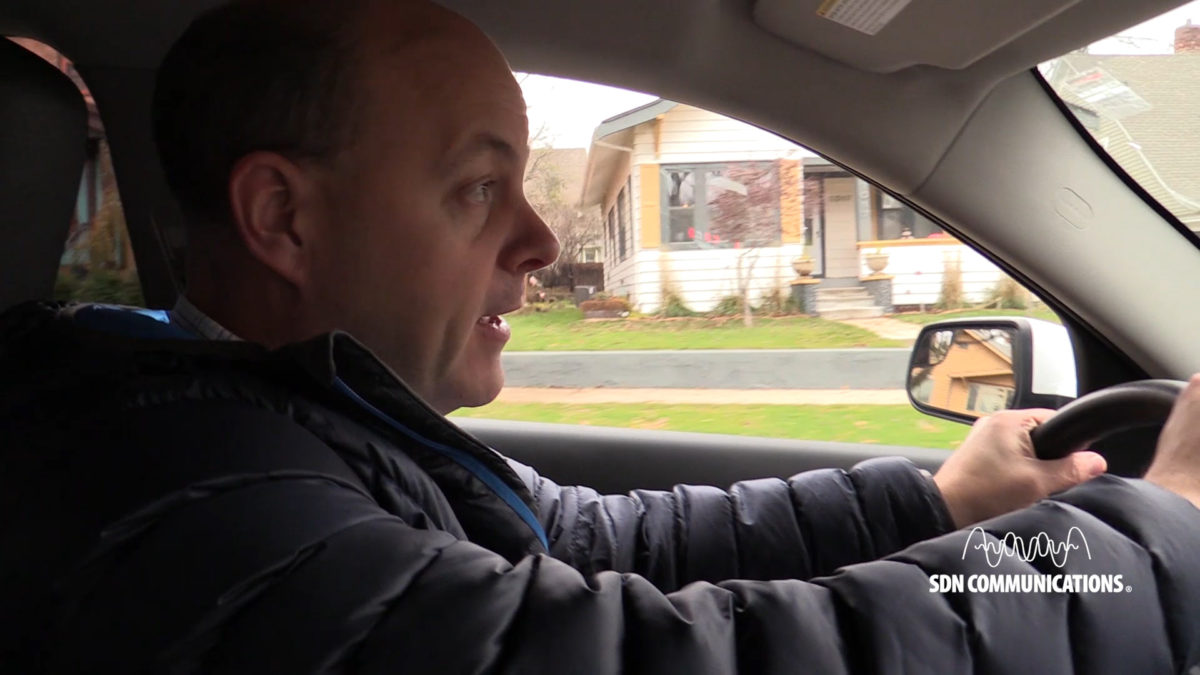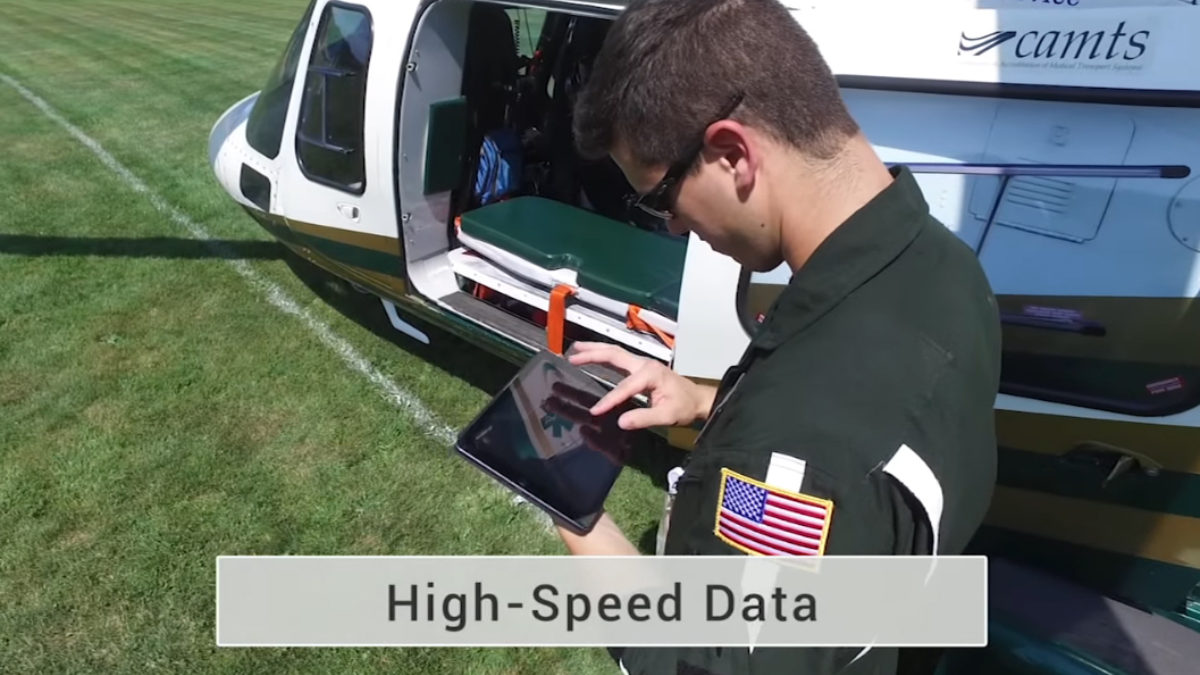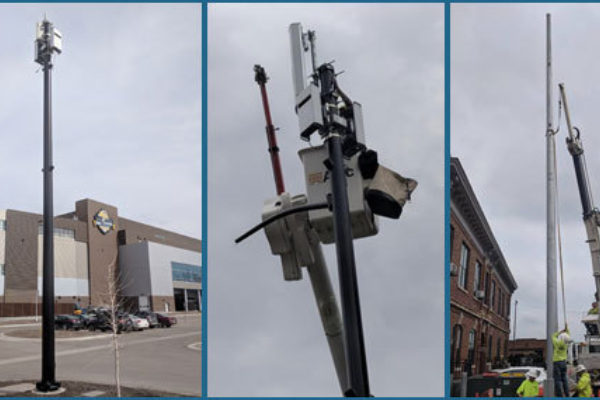Small Cells

As more people rely on their mobile phones and tablets to stream video and browse the internet, wireless carriers are building small cell networks to improve customer service and meet the bandwidth demands of mobile users.
A small cell is a low-powered, radio-access node within a bigger service footprint. However, the definition can vary from company to company. Generally, a small cell or microcell is a smaller version of a macrocellular tower. When in place, the small cell equipment receives data transmissions while the larger towers receive phone calls.
THE SMALL CELL CONCEPT
- They're placed near high-volume areas such as college or hospital campuses, near schools or in downtown shopping areas.
- The small cell’s radio unit receives data transmissions from your phone, allowing the nearest cell phone tower to better manage your call traffic. They can also be used to extend data service to hard-to-reach areas.
- As a result, all of the carrier's customers experience better data and cellular service, especially during high-traffic times, such as large gatherings or in the event of an emergency.

VIDEO: WHAT THEY MEAN TO YOU
To handle the ongoing growth in mobile bandwidth demand, wireless carriers are improving infrastructure.
SDN Communications is currently working with Verizon Wireless to do that in several South Dakota communities.
The video below explains what you can expect when small cells are added to your community.
VIDEO: WHAT THEY MEAN FOR PUBLIC SAFETY
Soon South Dakotans will be able to text photos and video to 911, which will require better data coverage.
Small cell poles will help provide that.
Long term, FirstNet will equip emergency responders with data reliant tools to better serve people in emergencies.
Watch the video below to see how.




